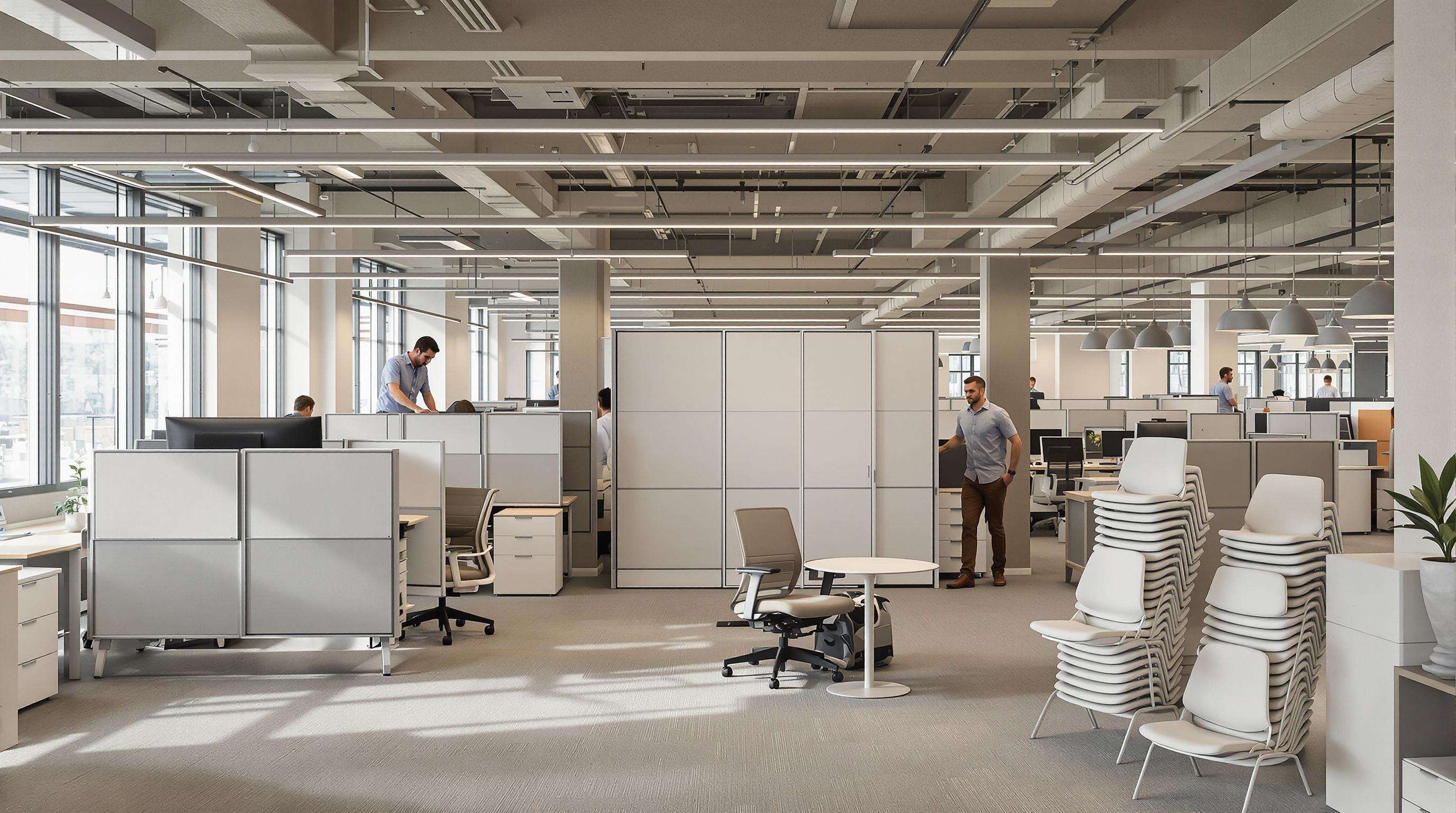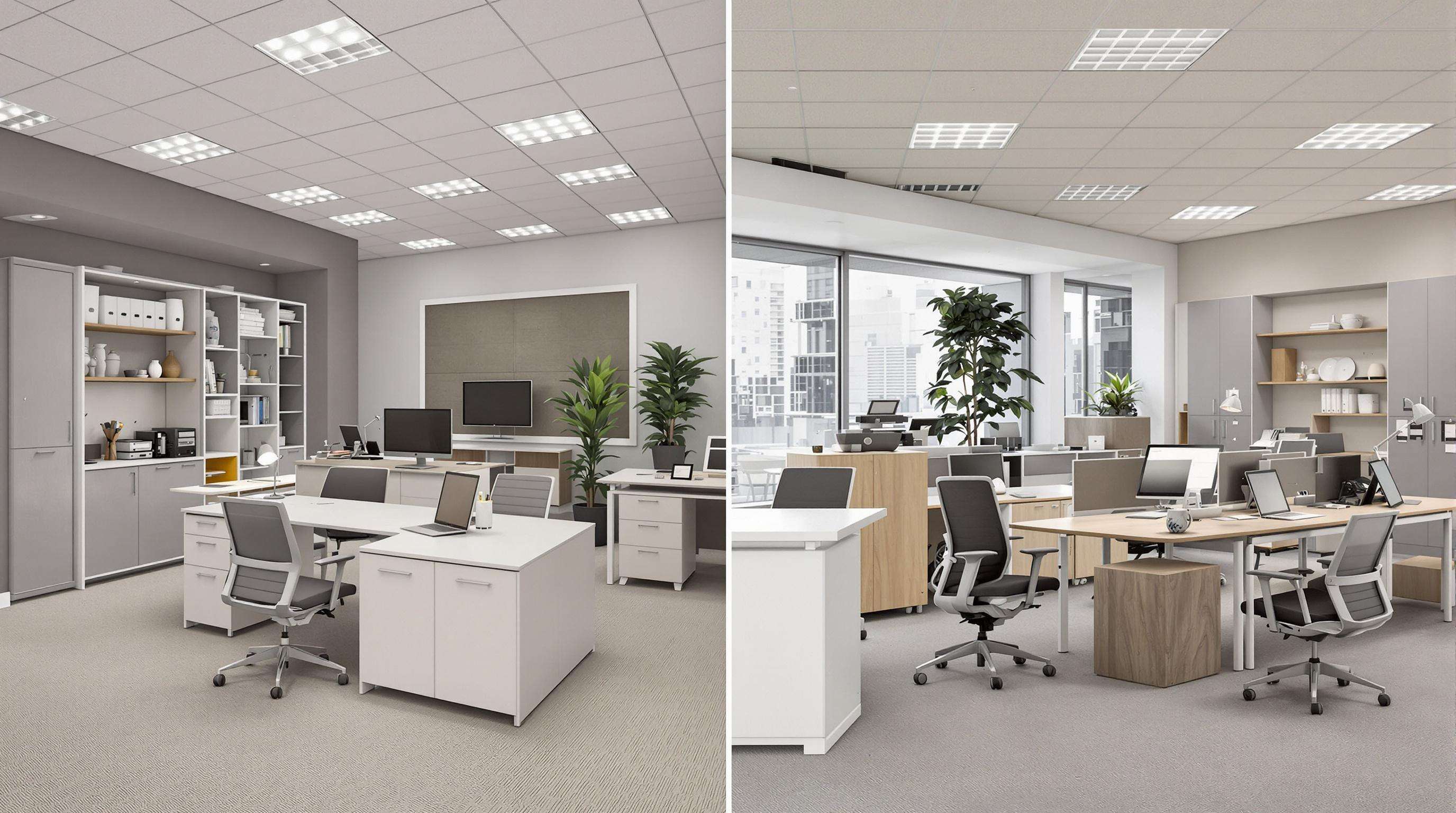How to contact us NOW? +86-18924894842 [email protected]
company information
No.237-258, Floor 2, Building C, GuangFoYiHao MeizhenVillage, Jiujiang Town, Nanhai district, Foshan City, Guangdong, China
Telephone:+86-18924894842
How to contact us NOW? +86-18924894842 [email protected]
When we talk about OEM office furniture, we're really referring to those custom made pieces that businesses order specifically for their unique workspace needs. This is different from off-the-shelf options because OEM furniture focuses on scaling designs to fit specific spaces, incorporating brand elements, and meeting particular technical specs that match how a company actually operates day to day. What makes these pieces stand out? They work well within whatever layout already exists in an office space, come with adjustable comfort features, and use materials chosen not just for looks but for lasting performance. Many manufacturers also build in special engineering touches like stronger support structures for team work areas, ensuring everything meets the precise demands of commercial environments where reliability matters most.
Since 2021, the commercial furniture scene has grown by about 23% when it comes to OEM partnerships, according to Global Workplace Analytics from last year. What's behind this trend? Mainly two things: companies want customized solutions that fit their unique needs across multiple locations, and they're looking to cut down on wait times by working with local manufacturers instead of waiting for stuff shipped from far away. Looking at the numbers, around 38% of mid-sized office furniture projects these days involve private label deals. These arrangements let businesses escape the constraints of standard catalogs without sacrificing on quality, which makes sense given how competitive the market has become lately.
While conventional furniture offers fixed designs and sizes, OEM solutions prioritize adaptive configurations—such as modular desks with reconfigurable power modules or acoustic paneling systems. Key differentiators include:
| Aspect | OEM Furniture | Off-the-Shelf Furniture |
|---|---|---|
| Customization Capacity | Full dimensional/functional control | Limited pre-set options |
| Lead Time | 6-8 weeks (design-to-installation) | 2-3 weeks (stock availability) |
| Brand Alignment | Logo embossing, corporate color matching | Generic aesthetic |
This contrast highlights OEM’s role in addressing hybrid work models requiring furniture that adapts to evolving spatial needs without full replacements.
When companies invest in custom OEM office furniture, they get the chance to weave their brand's personality right into how people experience their workspace. A recent 2024 survey found around two thirds of workers felt more connected to what their company stands for when they saw those brand colors and logos throughout their daily work environment. These made-to-order pieces let businesses match paint schemes exactly, incorporate company symbols where it makes sense, and pick materials that fit with established brand standards. What starts as just another desk or chair becomes part of something bigger than itself, turning ordinary office layouts into real reflections of who the organization is trying to be.
Today's original equipment manufacturers are providing modular office solutions that strike a balance between practicality and visual harmony. These include adjustable workstations and dividers that keep corporate branding consistent throughout different spaces, sound absorbing panels featuring approved materials and text designs, plus meeting areas decorated with colors that connect with workplace culture. According to recent data from the Office Design Trends publication for 2025, around seven out of ten hybrid offices have started focusing on flexible setups which help maintain brand identity even when rearranging office layouts.
Workspaces intentionally designed with OEM furniture see 41% higher employee retention (Workplace Psychology Institute 2023). Custom environments reduce cognitive dissonance between corporate messaging and physical surroundings—key for client-facing roles. Employees in brand-aligned offices demonstrate 28% greater advocacy for organizational goals, based on engagement analytics across 120 Fortune 1000 companies.

Modular office furniture from OEMs really helps companies adjust their spaces when teams switch between working together and needing quiet spots. Workstations that can be moved around plus walls that slide open make it easy to change from group meetings to solo tasks. According to some industry folks we talked to, companies save about two thirds on rearranging expenses compared to traditional offices that need major changes. The reason? These new systems use lighter materials so there's no tearing down walls or hiring contractors for big renovations. And let's not forget those clever pieces that serve multiple purposes. Fold away desks appear when needed then disappear again, while chairs just stack neatly in corners until someone needs them. Spaces become living things that grow and shrink with whatever the business throws at them next.
When companies work directly with original equipment manufacturers, it makes expanding office furniture much easier across different regions without losing track of design standards. The use of standardized modules allows businesses to recreate their branded workspace look at new locations without breaking the bank. According to industry experts who study commercial interiors, organizations that go this route typically cut down their buying expenses by around 20 percent versus trying to piece together furniture from local suppliers everywhere they open. Plus, those ready made electrical connections really help speed things along for IT departments when setting up new offices during company growth periods.
About 78% of companies are putting scalability at the top of their list when shopping for office furniture these days. This shift makes sense given how unpredictable real estate markets have become plus all the changes happening with remote work setups. Looking at what's hot in 2025, adjustable height desks keep showing up on wishlists, along with those easy to assemble systems that don't require tools. Around 43% of businesses actually mention being able to change things around quickly as their number one concern when making purchases. Original Equipment Manufacturers (OEMs) are stepping up to meet this need with designs built to last through whatever comes next. Their products incorporate features we haven't even seen widely yet, such as desks with built-in wireless charging spots and smart climate controls powered by artificial intelligence technology.

At first glance, store bought office furniture looks like it saves money, but when we look at what happens over time, original equipment manufacturer solutions actually cost about 34 percent less overall during those ten years according to recent procurement data from 2023. The main reason? Custom made OEM furniture just doesn't need replacing so often. Regular stuff typically gets tossed out every three to five years while these specially designed pieces last around eight to ten years instead. And this matters because when companies have to replace furniture constantly, they end up spending extra cash not only on new items but also paying workers to move things around, covering disposal costs, and dealing with all the lost productivity whenever departments are forced to rearrange their workspace again and again.
The modular design of OEM office furniture means companies can fix individual parts instead of tossing out whole units when something breaks. According to the 2024 Circular Workspace Report, this approach cuts down on waste by about 62% each year compared to those cheap throwaway options from big box stores. Built with quality stuff like powder coated steel frames and commercial grade laminate tops, these pieces last way longer under regular office wear and tear. Tests show they hold up to roughly four times as much daily usage as what most consumer grade furniture can handle. For businesses trying to meet their green goals without breaking the bank, this kind of durable construction makes sense both environmentally and financially over time.
Smart companies typically spend between 18 and 22 percent of their office budget on original equipment manufacturer furniture because it pays off over time through better operations, stronger brand identity, and keeping good people around longer. When offices have consistent maintenance rules everywhere they save about 27% on facility costs. Looks matter too. Most businesses say clients respond better when visiting properly branded spaces, closing deals at a rate that's nearly 70% higher. Workers in thoughtfully designed workplaces tend to engage more with their jobs, according to recent studies showing around 40% improvement in engagement metrics from last year's Workplace Experience Index. While it takes roughly three years before most see a return on investment, this makes sense for any business serious about growing sustainably without breaking the bank.
When companies bring all their office furniture buying together with just one OEM partner, things get much easier to manage and money starts saving itself. Getting bulk manufacturing deals means bigger orders translate into better pricing. We're talking about unit costs dropping around 40% when compared to shopping around from different suppliers according to the latest Office Furniture Industry Report for 2024. For businesses trying to roll out new offices nationwide, having everything come from the same source makes quality checks straightforward, delivery schedules predictable, and regulatory paperwork manageable. That kind of consistency matters a lot when trying to hit project timelines in multiple locations. Plus, working with fewer vendors cuts down on all that back and forth communication while also slashing transportation expenses because shipments can be planned more efficiently rather than dealing with multiple truckloads going separate ways.
When companies team up with OEM partners for furniture specs, they get consistent results across the board whether looking at materials used or how comfortable the pieces actually are. Recent research from last year showed something interesting too: around two thirds of businesses operating multiple office locations saw happier staff once they standardized their furniture setups throughout all sites. Making everything come out of one central factory really cuts down on those annoying differences we see when different regions source locally sometimes. Take color matching as just one example problem solved this way. Big corporations rolling out identical workstations worldwide know they can count on original equipment manufacturers keeping colors spot on within about 1 percent difference between units. That kind of consistency matters a lot when trying to keep a strong brand image across dozens or even hundreds of locations spread around the globe.
By aligning procurement with a trusted OEM partner, organizations reduce supply chain complexity while achieving faster deployment cycles—a key advantage in hybrid work models requiring rapid reconfigurations. These partnerships also future-proof furniture investments through modular designs that adapt to evolving workplace standards.
What is OEM office furniture?
OEM office furniture refers to custom-made pieces designed specifically for the unique needs of a business, incorporating brand elements and technical specifications.
How does OEM furniture differ from off-the-shelf options?
OEM furniture offers full customization, longer lead times, and brand alignment, unlike off-the-shelf furniture that provides limited options and generic aesthetics.
Why should a company invest in OEM office furniture?
Investing in OEM furniture allows for brand integration, enhances employee engagement, offers durability, and reduces long-term costs compared to standard furniture.
How does OEM furniture support hybrid work environments?
OEM modular furniture enables easy reconfiguration for changing work needs, supporting both collaborative and individual tasks.
Are there cost savings associated with OEM furniture?
Yes, while initial costs can be higher, OEM furniture saves costs over time due to its durability and minimal need for replacements.